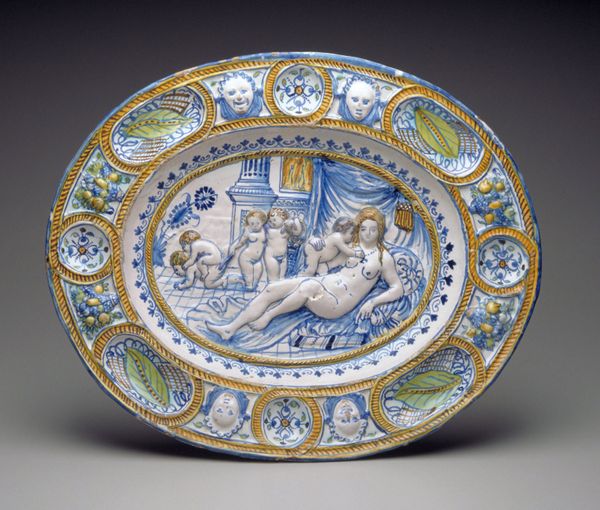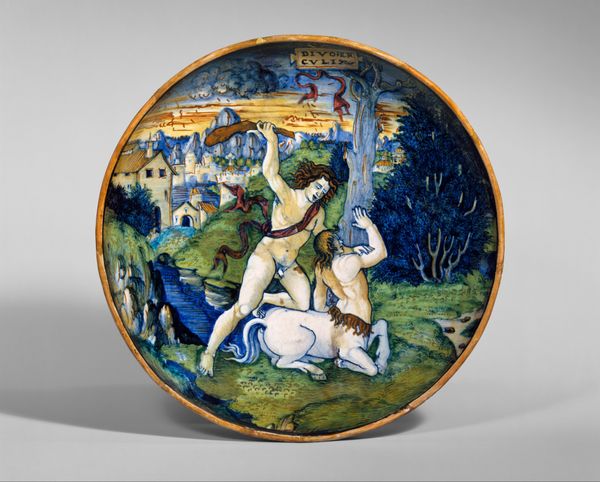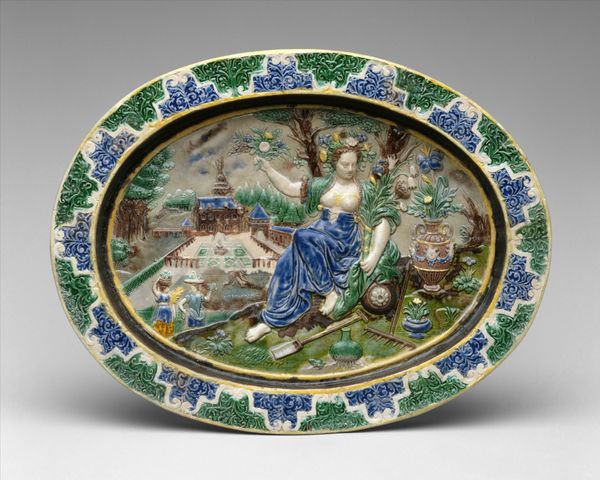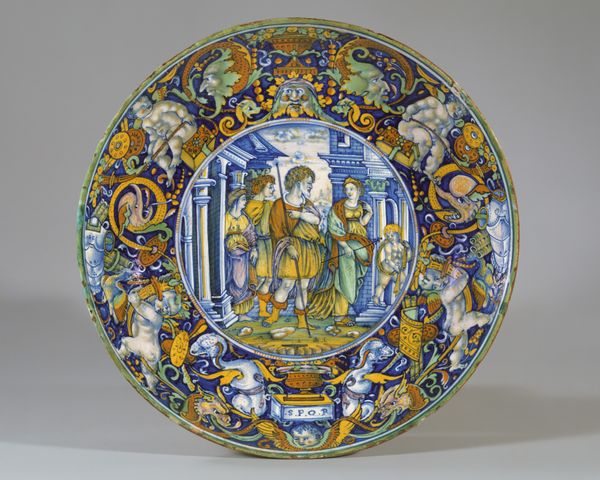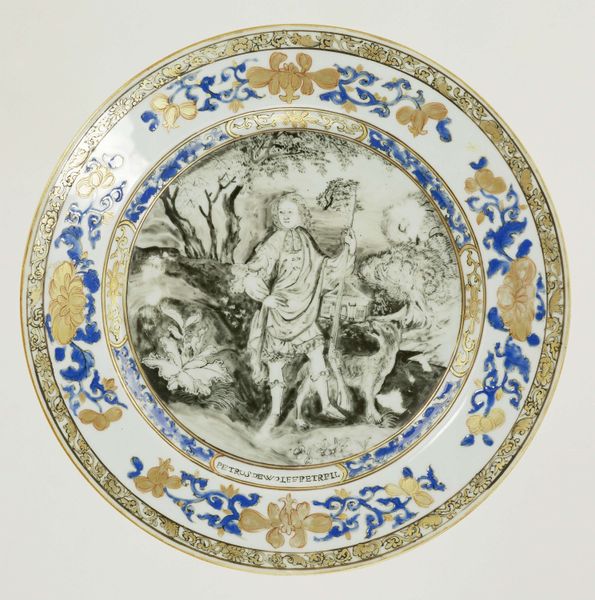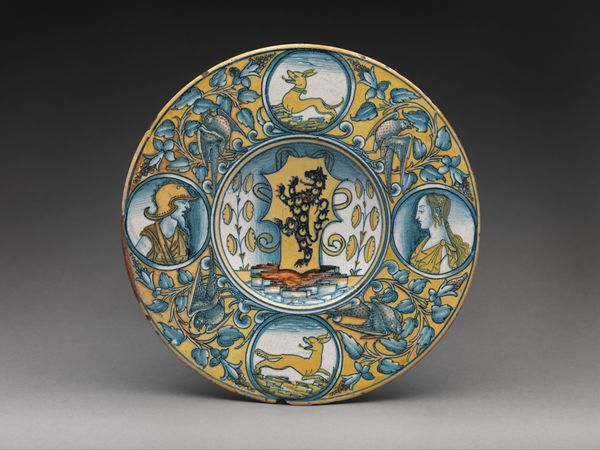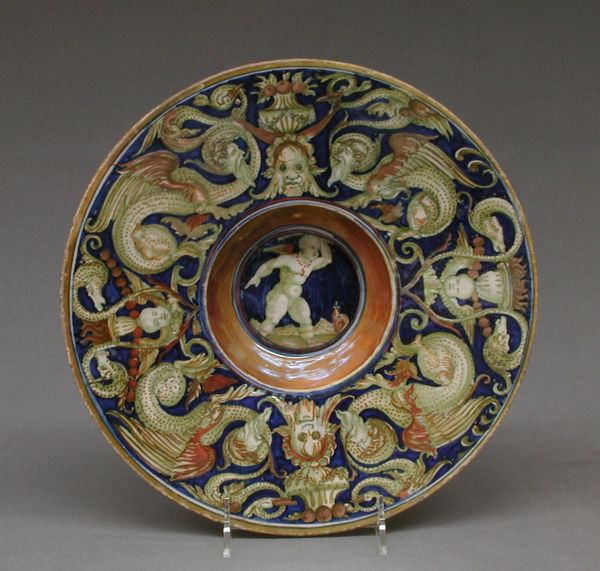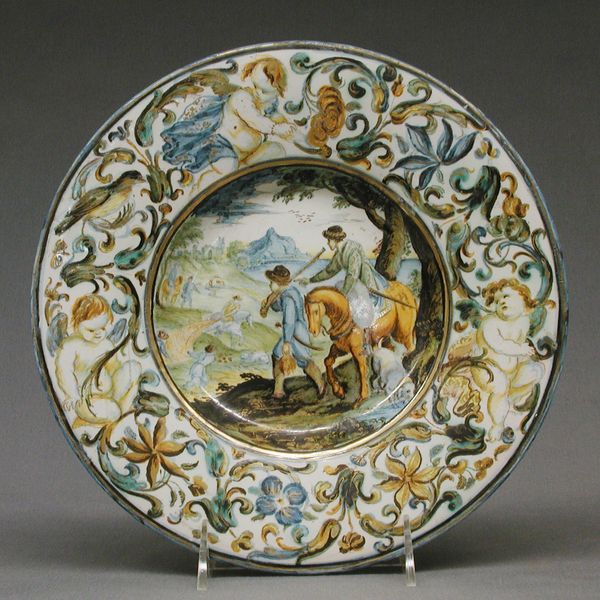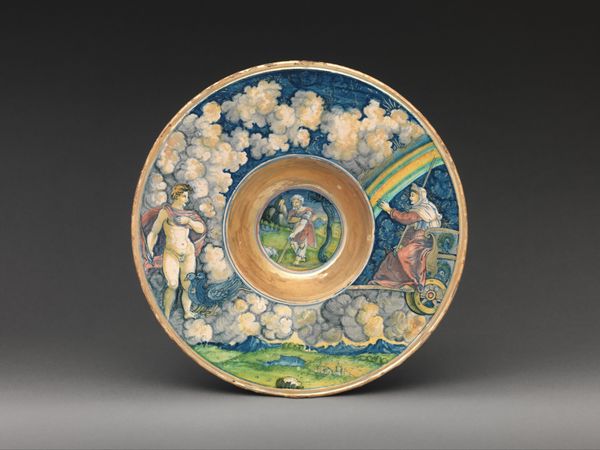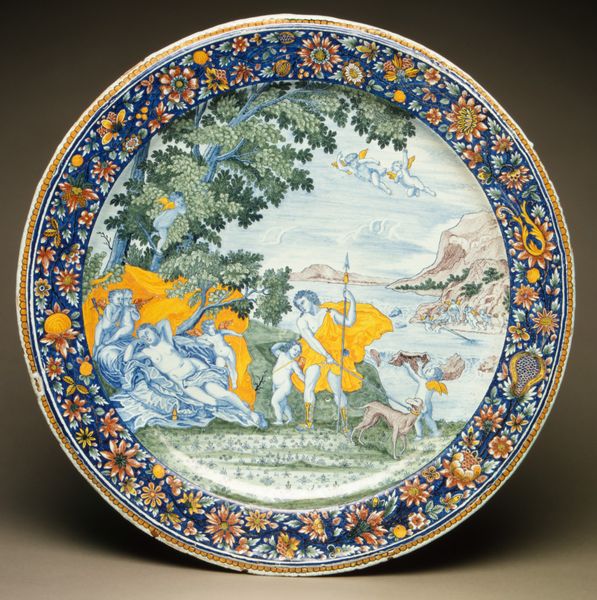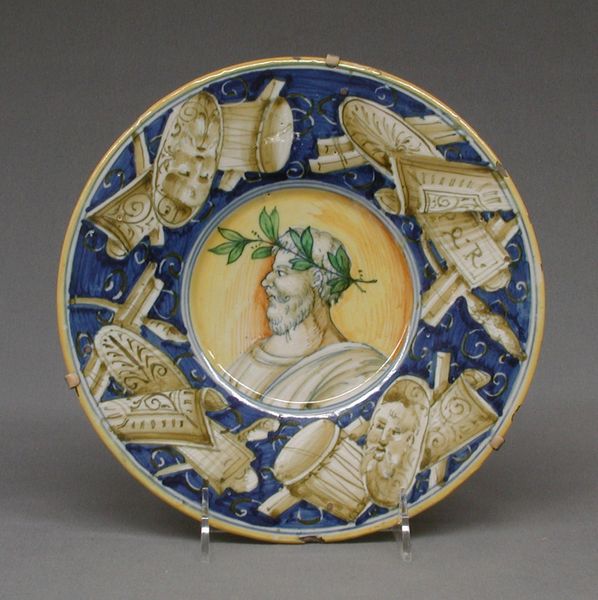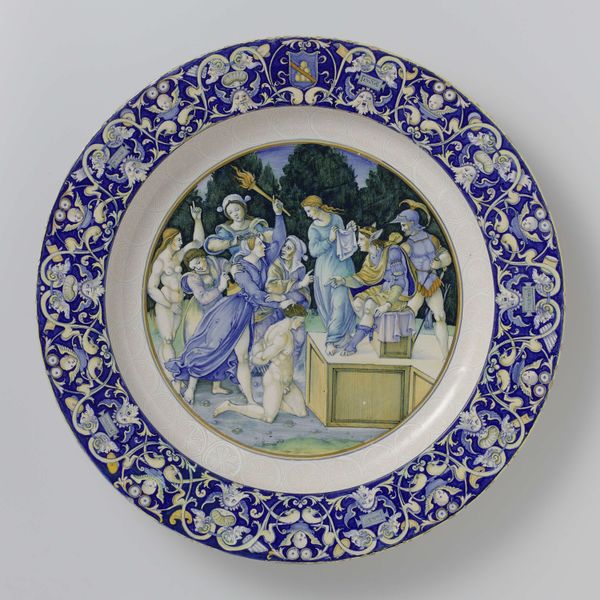
Dimensions: Overall: 2 1/2 × 19 3/4 in. (6.4 × 50.2 cm)
Copyright: Public Domain
Editor: Here we have "Dish with Diana and the Stag," created sometime between 1600 and 1750, and the piece uses ceramic and relief techniques to present this scene. It feels very opulent, but also a little unsettling. What strikes you about this piece? Curator: Well, immediately, the materiality speaks volumes. The fact that this scene, typically rendered in painting or sculpture, is pressed into ceramic changes its significance. It invites us to consider the labor involved – the molding, firing, and glazing, as well as how that process makes it both precious and utilitarian. Editor: Utilitarian? It seems too ornate to be functional. Curator: Precisely! That tension between high art and craft is crucial. Ceramic, traditionally a functional material associated with domestic labor, is elevated here to depict a mythological scene. This speaks to a changing social context, where access to luxury goods and artistic patronage broadened. Think about who might have commissioned or owned such an item, and what it communicated about their status and tastes. Editor: So it's less about the Diana narrative itself, and more about the material transformation and its social implications? The act of consumption almost? Curator: Exactly. Consider the vibrant glazes, mimicking jewels or expensive fabrics. Palissy, a potter obsessed with natural forms, faced significant production challenges. The failures in creating high-fired ceramics are numerous. What does that obsessive material investigation and high degree of failure communicate about wealth, power, and alchemical experimentation? It hints at a society grappling with new forms of wealth and display, as well as artistic experimentation, a reframing of production and function. Editor: That’s a completely different lens than I initially saw it through. I was so caught up in the mythological subject that I missed the story the material is telling. Curator: Often, it's in the making that the truest reflection of the culture lies. Examining labor, skills, and material culture expands and deepens art historical thinking.
Comments
No comments
Be the first to comment and join the conversation on the ultimate creative platform.
